How To Build A Huge Natural Pond For Your Pet Fish
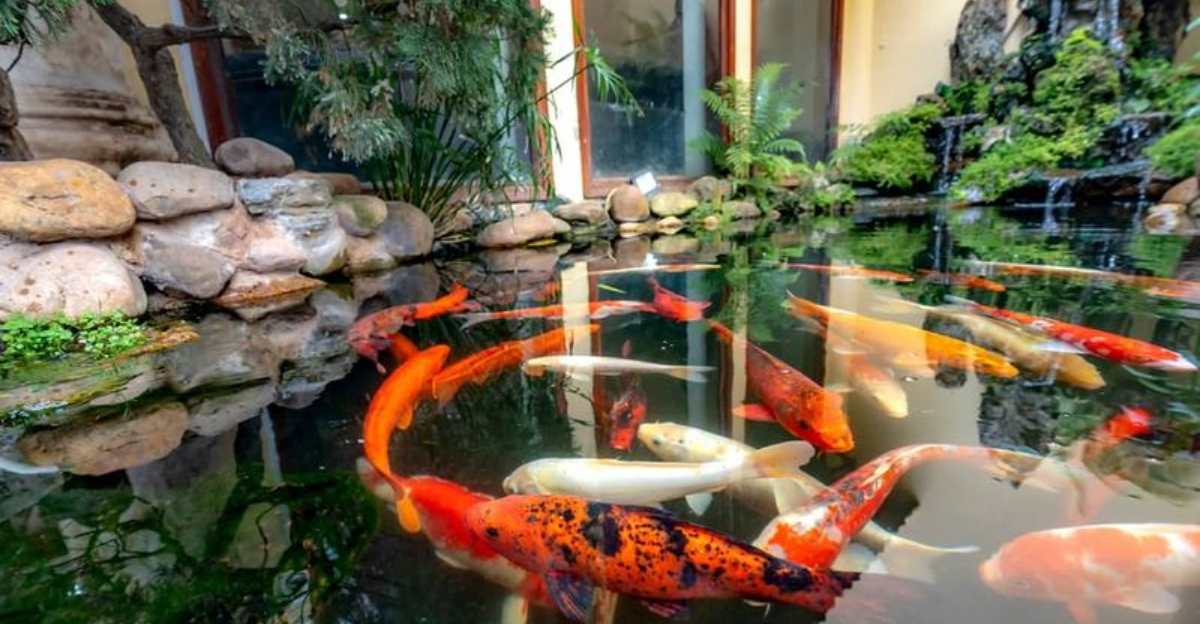
Creating a natural pond for your pet fish transforms your backyard into a stunning water feature while giving your finned friends a spacious home.
Unlike small indoor aquariums, outdoor ponds allow fish to thrive in a more natural environment with plenty of room to grow.
Building your own pond might seem challenging at first, but with the right materials and steps, you’ll be amazed at what you can create!
Choose The Perfect Location
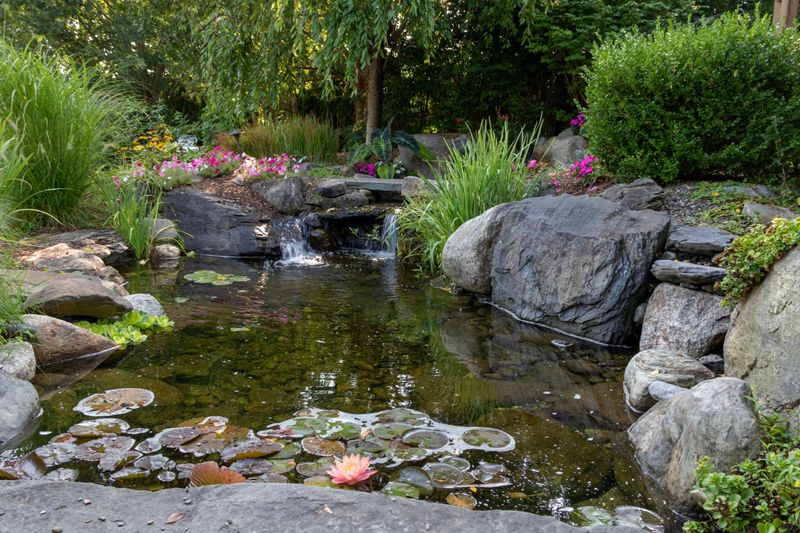
Sunlight plays a crucial role in your pond’s ecosystem. Pick a spot that gets 4-6 hours of sunlight daily, which supports plant life without causing excessive algae growth.
Avoid placing your pond under trees where falling leaves can pollute the water and create extra maintenance work. The ideal location should be visible from your house so you can enjoy watching your fish.
Consider the natural contours of your yard – a slightly sloped area with good drainage works wonderfully. Remember that proximity to electrical outlets matters for running pumps and filters.
Gather Essential Tools And Materials
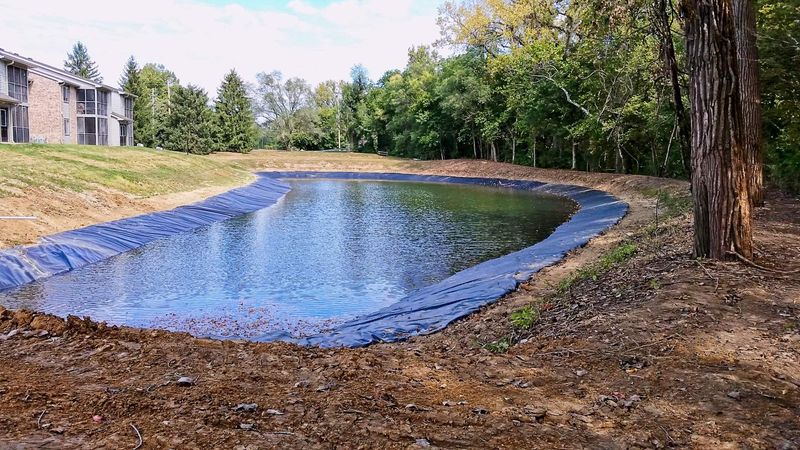
Your pond-building adventure requires specific equipment to ensure success. Start with digging tools: shovels, picks, and a wheelbarrow for removing soil. You’ll need a measuring tape, level, and stakes with string to outline your design.
For lining and filtration, purchase high-quality pond liner (EPDM rubber is durable), underlayment fabric, a pump sized for your pond volume, and a filtration system. Rocks of various sizes create natural edges and hiding spots for fish.
Don’t forget plumbing supplies: PVC pipes, valves, and silicone sealant for waterproofing connections.
Plan Your Pond’s Size and Depth

Size matters tremendously when housing fish outdoors. For koi or goldfish, aim for at least 500-1000 gallons with a minimum depth of 3 feet to protect from predators and temperature fluctuations. This typically translates to dimensions of about 10′ x 15′ for a substantial natural pond.
Create multiple depth zones in your design – shallow shelves (10-12 inches) for marginal plants, middle depths (1-2 feet) for water lilies, and deep areas (3+ feet) for fish to overwinter safely. Sketch your plan on paper first, including these various zones.
Larger ponds maintain stable water parameters more easily than smaller ones.
Excavate Like A Pro
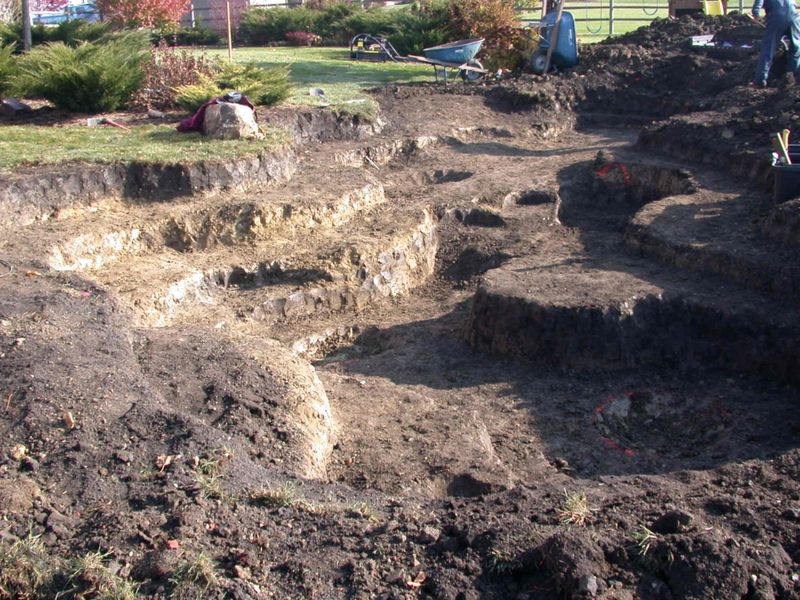
Mark your pond outline using stakes and string, following your design plan. Start digging from the center, working outward to create your planned depth zones. Save the topsoil for garden use elsewhere in your yard.
Remove all rocks, roots, and sharp objects that could puncture your liner. The pond bottom should be relatively level within each depth zone, though the overall pond will have different depths.
For truly large ponds, consider renting a mini-excavator to save your back and time. Once excavated, use a level to check that the perimeter edges are even – this ensures water won’t spill over one side.
Install Proper Underlayment And Liner
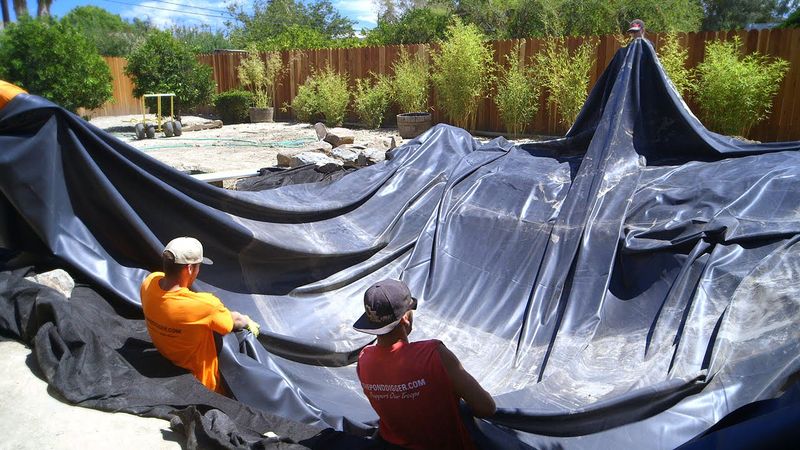
Proper installation of underlayment prevents future leaks and extends your pond’s life. Start by removing any remaining sharp objects from the excavated hole, then lay down a thick layer of sand (1-2 inches) as your first protective barrier.
Next, install commercial pond underlayment fabric, overlapping seams by at least 12 inches. This cushioning layer protects your main liner from punctures caused by roots and rocks underneath.
Finally, position your EPDM rubber liner (45-60 mil thickness for durability), allowing plenty of excess material around the edges. Avoid stretching the liner – instead, let it naturally conform to the contours of your pond.
Set Up Filtration And Circulation Systems
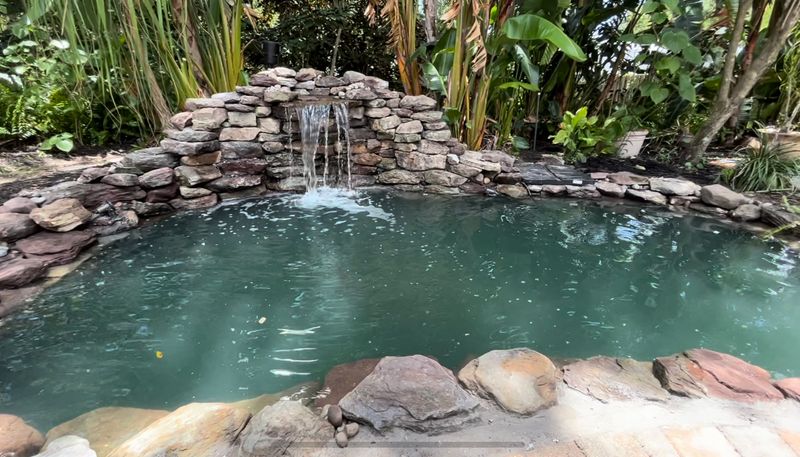
A robust filtration system keeps your pond water crystal clear and healthy for fish. Begin with a properly sized external pump – generally, your entire pond volume should circulate through the filter once every two hours.
Install a biological filter containing beneficial bacteria media to break down fish waste. Position a skimmer at one end of your pond to remove floating debris, and place the pump return at the opposite end to ensure complete water circulation.
Consider adding a UV clarifier to control algae growth. Your plumbing setup should include easy-access valves for maintenance and winterizing purposes.
Create Natural-Looking Edges

Transform your pond from an obvious artificial pool to a natural-looking water feature by carefully designing the edges. Use varying sizes of flat rocks to overlap your liner edges, securing them with waterproof foam specifically made for ponds.
Between rocks, add smaller gravel and sand to fill gaps while creating a more natural appearance. Position larger boulders strategically around the perimeter to create visual interest and provide jumping-off points for viewing your fish.
Leave some areas with gently sloping beaches where wildlife like birds can safely access the water. Tuck liner edges underneath rocks completely to protect from UV degradation.
Add Aquatic Plants For Balance
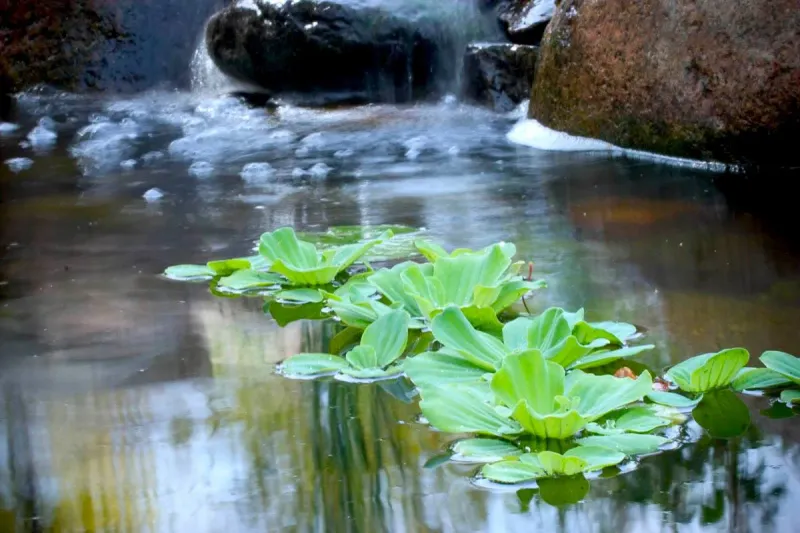
Aquatic plants aren’t just decorative – they’re essential for a balanced ecosystem. Start with oxygenators like anacharis or hornwort that grow beneath the water surface, adding vital oxygen while absorbing excess nutrients that algae would otherwise use.
Include floating plants such as water lettuce or water hyacinth to provide shade and fish hiding spots. For your shallow shelves, add marginal plants like iris, rushes, and arrowhead that grow partially submerged.
Water lilies make stunning additions while shading the water. Plant everything in aquatic planting baskets using clay-heavy soil topped with gravel to prevent floating.
Install A Waterfall Or Stream

A waterfall adds mesmerizing sound and crucial aeration to your pond. Build up a mound at one end using excavated soil compacted firmly. Cover this structure with underlayment and liner, ensuring it connects seamlessly with your main pond liner.
Create a natural-looking waterfall by stacking flat rocks in slightly offset layers, forming pools where water can cascade down. Waterproof foam helps direct water flow and prevents it from disappearing beneath rocks.
Connect your pump to deliver water to the top of the waterfall through hidden PVC piping. The sound of falling water masks road noise while adding valuable oxygen that fish and beneficial bacteria need.
Select Fish Species Wisely
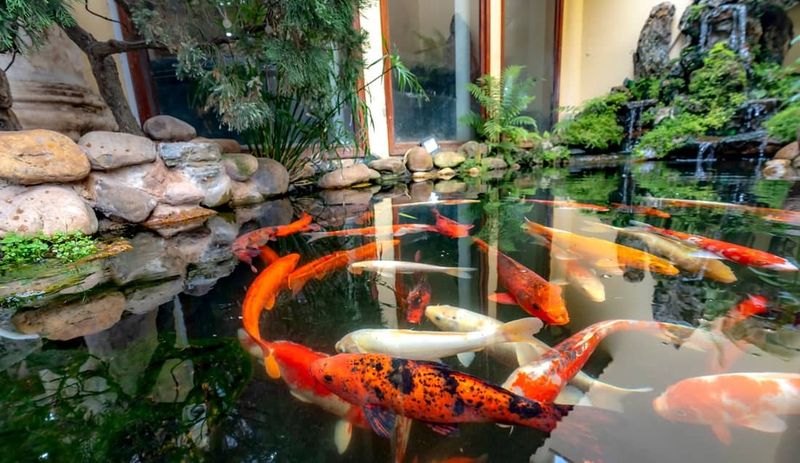
Not all fish thrive in outdoor pond environments. Koi are classic pond fish, growing up to 3 feet long and living 20-30 years when properly cared for. They’re interactive, often taking food from your hand.
Goldfish varieties like shubunkins and comets offer colorful alternatives that are somewhat hardier and less expensive than koi. For natural pest control, consider adding a few mosquito fish that devour insect larvae.
Start with fewer fish than you ultimately want – they’ll grow larger than you expect! The general rule is 1 inch of fish per 10 gallons of water. Introduce fish gradually after your pond has cycled for at least three weeks.
Maintain Water Quality Parameters
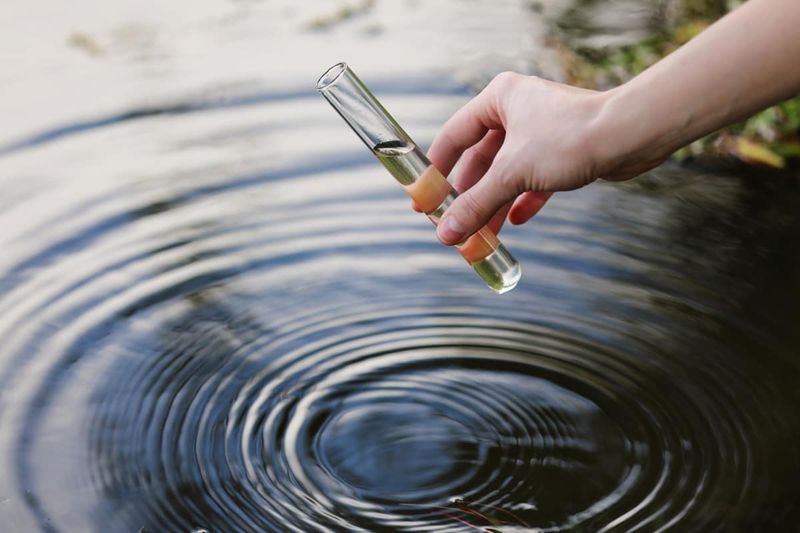
Healthy fish require proper water chemistry. Invest in a quality test kit to monitor ammonia, nitrite, nitrate, and pH levels regularly. Aim for zero ammonia and nitrite, while keeping nitrates below 40ppm.
Pond pH should remain stable between 7.0-8.4 for most fish species. Add beneficial bacteria products monthly to help establish and maintain your biological filtration system.
Perform partial water changes (15-20%) every 2-4 weeks, but never change more than 25% at once to avoid shocking your fish. Use a dechlorinator when adding tap water, and consider installing an automatic top-off system to maintain consistent water levels during hot weather.
Prepare For Seasonal Changes
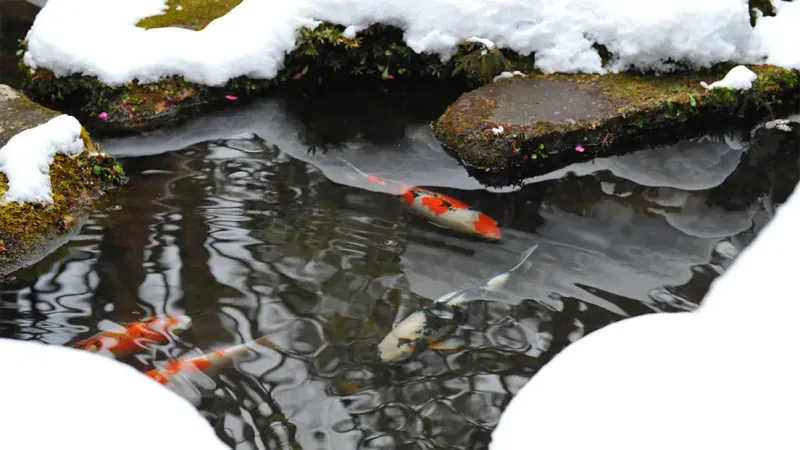
Seasonal maintenance keeps your pond thriving year-round. In spring, clean debris, restart pumps, and add beneficial bacteria to jumpstart the ecosystem. Summer requires monitoring water levels due to evaporation and occasionally thinning out rapidly growing plants.
Fall means preventing leaves from decomposing in your pond – install netting before leaves drop. For winter in cold climates, remove pumps or switch to a de-icer to maintain a breathing hole in the ice.
Never break ice on your pond as shock waves can harm fish. Deep areas (3+ feet) allow fish to hibernate safely below the freeze line where water remains a constant 39°F.






